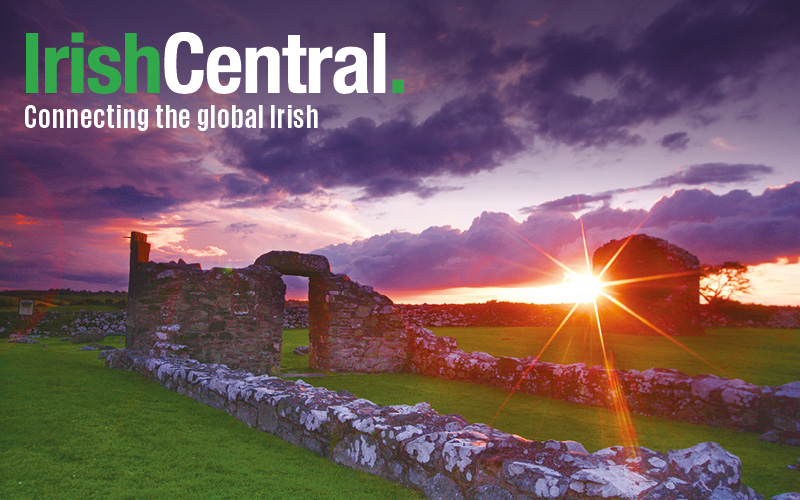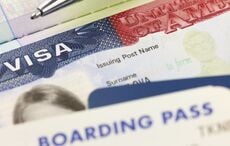Surfing. The very word brings to mind golden sunsets over tropical locations. The palm trees of Hawaii. The warm seas and roaring waves of Australia and California. Certainly not the cold and choppy waters of the Irish Atlantic.
And yet Ireland is now emerging as one of the new frontiers of the surfing world. This island perched at the edge of Europe, one of the first land masses to be pummeled by the turbulent Atlantic, has a growing community of surfers who extol what Ireland has to offer. “People are surprised to learn that there is surfing in Ireland,” laughs Easkey Britton, the Irish and British surfing champion who hails from Donegal. “They think the water is full of icebergs.”
Ian Johnson, a South African surfer and surfboard shaper who now lives in County Clare, couldn’t agree more. “There’s such a difference between Ireland and South Africa,” he says. “It’s easy to get into surfing in South."
Despite these obvious disadvantages to surfing in Ireland, these surfers – both of whom have spent time surfing in well-known hotspots such as Tahiti and Hawaii – choose to live and surf in Ireland. Why is this?
The answer to this question is at the heart of a fascinating documentary called Sea Fever: An Irish Surf Odyssey. Filmed over the course of two years by first-time filmmaker Ken O’Sullivan, it captures Irish surfing throughout the seasons and chronicles the development of a surfing culture in Ireland over the past 40 years.
Ken, who is originally from Clare, had worked abroad for many years. When he moved back to Lahinch six years ago, he was taken aback by the changes that had been wrought on the area.
“I was more aware of my environment when I came back,” he remembers. “I was struck by the beauty of the place and amazed by the boom in surfing. The passion of the surfers interested me too. They live to surf and build their lives around it. They surf every day and constantly push themselves to ride new waves.”
He started to film some of Irish surfing’s biggest risk takers – the surfers who ride Ireland’s most famous big wave, Aileen’s just off the Cliffs of Moher. This wave was first discovered by photographer Mickey Smith and a group of Australian bodyboarders in 2004 and was first surfed the following year.
“Many people who visit the Cliffs of Moher are unaware of what happens there,” says Ken O’Sullivan. His film captures the action as it unfolds. Aileen’s, one of the world’s most formidable waves, starts to roll in from the Atlantic. As the swells approach Ireland, they hit a narrow shelf of land. The wave rears up to 50 foot in height and offers surfers a challenging ride right up to the dramatic 700-foot-high cliffs.
Easkey Britton, the first woman to surf the wave, describes it as “addictive. With the cliffs rising up in front of you and a big mountain of white water coming up behind you, you just want to do it again and again”.
Sea Fever documents the history of this wave and the enthusiasm of those who surf it. It also travels back in time to explore the development of surfing in Ireland, a culture that is merely a few decades old.
Rod Bennett, who has been living in Ireland for 21 years, first visited the country in 1973. “Friends told me about the surfing and the Guinness so I came to try it for myself,” he recalls. “I spent three weeks traveling from Waterford to Clare, surfing along the way. I didn’t meet one single surfer.”
Unbeknownst to Rod, there were some surfing enthusiasts in Ireland at that time. The young Kevin Cavey had seen a picture of a surfer in Reader’s Digest and was inspired to try it for himself. He ordered a board from Cornwall, placed an ad in the Irish Independent asking others if they were interested and in 1965 organized a “surfari” to the west of Ireland.
The sufari included stops in Sligo and Donegal, where the surfers met the Britton brothers. Together, they started off a tradition of surfing in the North West of Ireland.
The film has archival footage which expresses the pioneering spirit of the time. Viewers are shown images of young men racing joyfully into the sea, lugging rudimentary surfboards.
Easkey Britton is the second generation of the Britton family to become passionate about surfing. In the film, she recounts how her father and his brothers learned to surf.
Her grandmother brought back surfboards from California, intending to use them as decorations in her Donegal guesthouse. “My dad and his brothers paddled on them when they were young,” says Easkey. “But it wasn’t until they saw a visitor stand on them that they realized what they were really for. Before long, they were up on the boards and it all progressed from there. My nana probably regrets it now. We’ve got salty blood because of her.”
So salty that Easkey was named after her parents’ favorite surf break off the West Coast of Ireland. The name derives from the Irish word for fish (iasc), making it particularly apt for a surfing champion.
Within a few years, Kevin Cavey and the Britton brothers were competing in European surfing competitions. This brought Ireland to the attention of the international surfing community and in 1972, it was chosen as the host country for the European Surfing Championship. Unfortunately, the surf was disappointing on the day of the championship. The waves were small. The swells were calm. There was no challenge. It wasn’t until the day after that surfers got the opportunity to experience the thrills of surfing Irish style.
“It was epic,” says Mike Wingfield, a member of the English Surf Squad of the time. “It was overhead, glassy and perfect. Nobody could get out of the water.”
That year could be seen as a turning point in Irish surfing. Ireland was now a feature on the international surfing map. However, the number of surfers remained low – a mere two to three thousand people – until the boom of recent years.
Ian Johnson has surfed every day for decades. Until five or six years ago, he was usually alone on the ocean. “Now, I can’t even get parking close to the
The Irish Surfing Association claims that at least 70,000 people have surfed in Ireland once or more. It’s this jump that prompted Ken O’Sullivan to make his documentary.
It’s also what pushed the most enthusiastic surfers to conquer Aileen’s. Traditional surfing spots were becoming crowded. They had to discover new frontiers.
John McCarthy, another Irish surfing champion, was the first to surf Aileen’s, along with Dave Blunt. They were part of a group that developed a new technique whereby a jet ski pulls the surfer who is on a specially adapted board. The speed of the jet ski allows the surfer to get ahead of the swell. He then lets go of the tow rope and slides across the wave.
Saul Harvey, a local surfer, initially thought Aileen’s surfers were mad. “You look at the huge cliffs and the powerful wave and you think they haven’t a hope,” he says.
He has since been won over and even surfed the wave himself. He describes it as like “standing in an elevator when all of a sudden, the floor drops from underneath you.”
Aileen’s wave is but one example of the many challenges Ireland has to offer surfers. As John McCarthy, the first to surf Aileen’s, says, “the best thing about traveling is coming back to Ireland with the skills to surf better waves and realizing that the waves in Ireland are some of the best in the world”.
Surfers are now visiting Ireland from other countries, surfers such as the seven-time world champion Kelly Slater who has spent time here conquering our waves. And surfers such as the people interviewed for this documentary, whose lives are dictated by weather charts, ocean swells and the next wave.
“Our only problem is the Irish weather,” says Ian Johnson. “It’s diabolical. It doesn’t stay the same for ten minutes.”
In typically optimistic surfer fashion, he can also see the positive side of this. “Ireland is small and its weather is variable so you can usually travel to find the perfect offshore waves,” he says. “Bundoran, Lahinch and Kerry can be three completely different worlds.”
No matter what the weather, Irish surfers will always surf. In fact, the worse the weather, the more of them take to the waves. In 2006, thousands traveled to the West Coast to catch the frenzied waves that resulted from Hurricane Gordon wreaking havoc over the Atlantic.
This is what Irish surfing is all about. As Mickey Smith says, “Friendships, experiences and the opportunities to push myself and my surfing. I’ll always be grateful to the Emerald Isle for that.”
Or perhaps it’s how pioneer Kevin Cavey explains it. “You’re tingling with the forces of nature when you emerge from the sea. Surfing brings us back to our roots. That’s why it’s catching on.”
With enthusiasts such as the characters captured in this film, Irish surfing looks set to grow and grow. “Our secret is finally out,” says director Ken O’Sullivan. For more information, visit www.seafever.ie. For DVD information visit www.SeaFeverMovie.com
VISIT PHOTO GALLERY - HERE




Comments